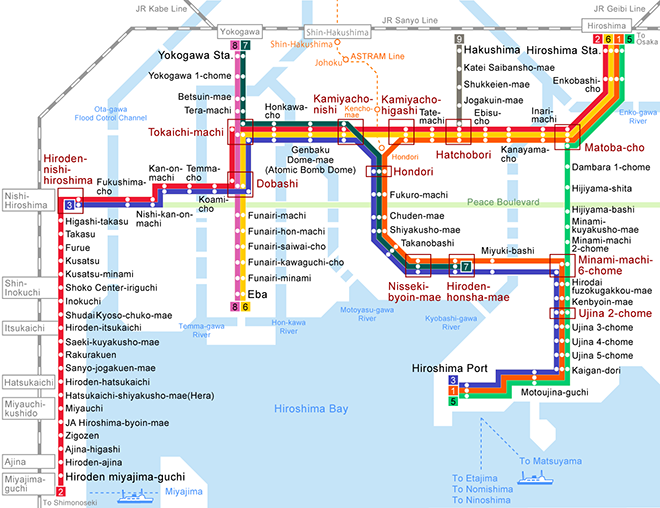Hiroshima Electric Railway is the largest railway operator in Japan. The total length of the line is about 35 kilometers (including 15 kilometers of railway lines), and the total number of vehicles is the largest tram in Japan. The number of passengers getting on and off at Hiroshima Street Train Station is almost the same as JR Hiroshima Station and an order of magnitude higher than that of tram stations.

Although Hiroshima City has a population of nearly 1.2 million, there are no subway lines, and tram lines cover the city. Hiroshima is the only city in Japan where trams still dominate traffic.
The history of Hiroshima trams began in 1912 (Taisho 1). Hiroshima Electric Railway ran lines between Hiroshima Station-Aoi Bridge (now in front of the Atomic Bomb Dome), Kamiyacho-Miyuki Bridge Nishizuke (now Miyuki Bridge) and Hatchobori-Shirotori. After that, in 1931 (Showa 6), the Miyajima Line connecting Nishi-Hiroshima and Miyajimaguchi was opened. In 1942 (Showa 17), the company name was changed to the current Hiroshima Electric Railway.
Hiroshima Electric Railway still retains the Model 650 “Bombed Train” that was operating in the city when the atomic bomb was dropped and has been put into commercial operation. The “Bombed Train” is an invaluable historical testimony that went into operation three days after this tragic episode, and the streetcar and Hiroshima baseball stadium as well led Hiroshima’s reconstruction and are symbols of pride for the people of Hiroshima.

Our Real Estate agency here helps foreigners find apartments in Hiroshima and Okayama. Reach out to our staff who can speak English, Chinese, Vietnamese and Spanish if looking for a place at ryowainternational@ryowahouse.co.jp.

